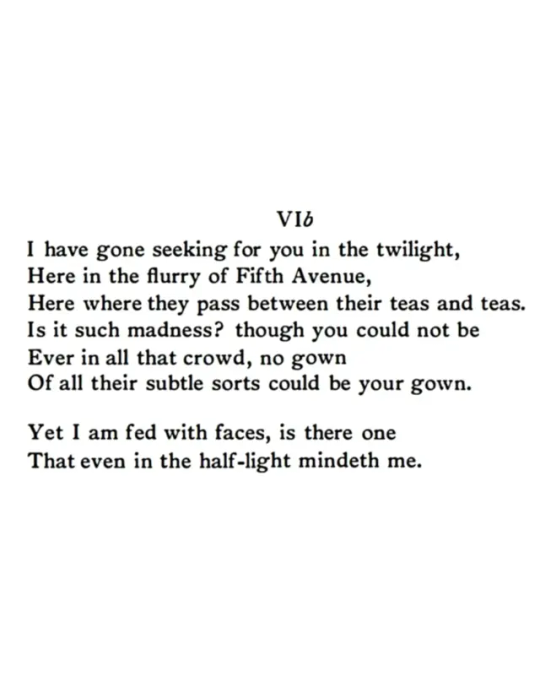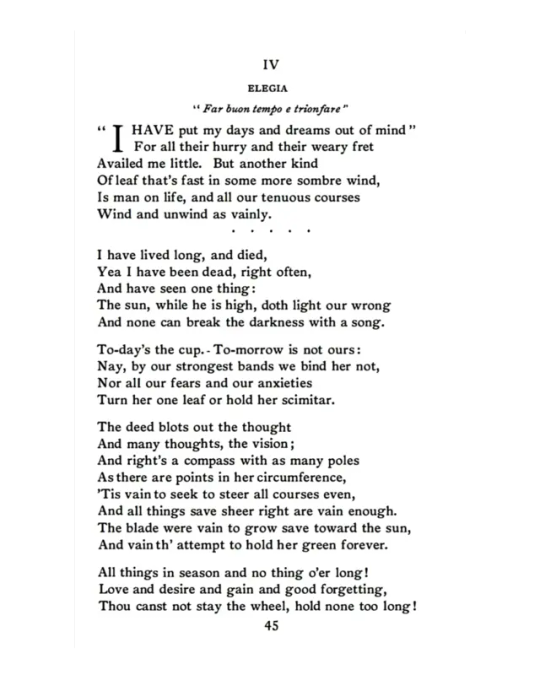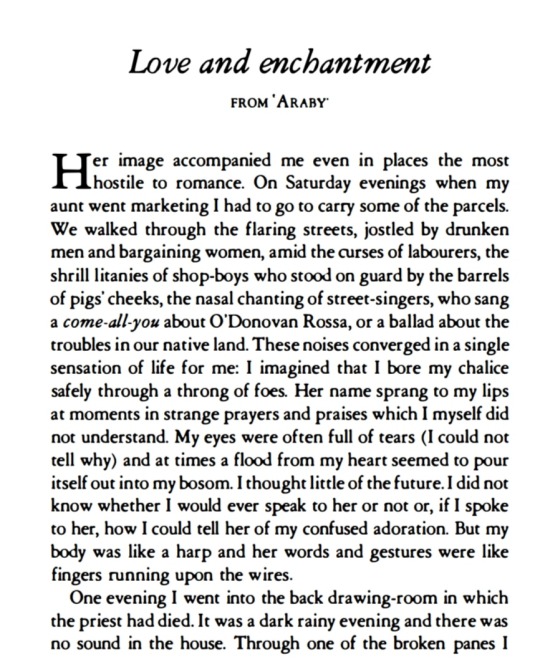Text
This initial photograph of mine for the current year holds marginal appeal to me, as I generally eschew the penchant for capturing visual representations. Nevertheless, there exists a pragmatic utility in utilizing images to manifest one's presence in the contemporary milieu. I conceptualize my persona as a nuanced amalgamation of introverted and extroverted attributes, harbouring a proclivity for distancing myself from prevailing fads, which, unequivocally, prove to be vexatious and transform one's existence into an arduous ordeal. The contemporary zeitgeist, bereft of poeticism, authenticity, and genuine affection, becomes an ostentatious facade, where ostensibly cherished connections are but disingenuous posturing. Occasional recourse to imagery serves as a mnemonic device, facilitating recollection of one's intrinsic essence and the latent potential for affection, even in moments when life greets one with salutations of despair. Is it not an acknowledgement of the despondency inherent in the transience of enduring significance?
0 notes
Text
In the realm of human interaction, as one engages in introspective discourse with their own intellect, a pervasive sentiment emerges — that of sharing one's innermost sentiments with a cherished companion. However, in contemplation of the disconcerting prospect that none shall extend genuine concern, an existential quandary unfolds. Faced with the absence of external regard, a profound question arises: how ought one navigate the intricacies of their existence in a world seemingly indifferent to their essence
In such a circumstance, is it befitting to lament the dearth of attention from those who fail to reciprocate? Is there solace to be found in mourning the neglect of one's presence by the indifferent masses? Perhaps, for within the confines of grief lies a potent force, an enduring companion that surpasses the ephemeral nature of love, loved ones, or the tender recollections crafted with a special soul.
Grief, with its perpetual embrace, assumes the mantle of an everlasting boon. Its longevity unfolds akin to an epic narrative, with diverse rhythms, resonances, and expressions that shape the cognitive journey, providing a conduit to transcend the vicissitudes of life. In this tapestry of existence, grief emerges as an enduring muse, fostering resilience and fortitude in its poignant cadence.
0 notes
Text
In the symphony of existence, as we engage in introspective dialogues with our minds, the notion of having a cherished confidant to share our innermost sentiments is a ubiquitous pursuit. Yet, amidst the vast expanse of worldly indifference, what facets of our being remain unattended? Contemplating our significance, bereft of the caring touch of others, beckons profound introspection. Do we lament the absence of attention from those who neglect our essence? Is there solace to be found in grieving for the unresponsive souls?
In the tapestry of life, grief emerges as a timeless companion, its enduring presence akin to an epic narrative unfolding in varied cadences. Unlike the fleeting embrace of love or the ephemeral allure of cherished memories, grief, with its persistent resonance, becomes a steadfast ally. Its protracted journey, akin to an epic saga, weaves through the tapestry of existence, providing a unique rhythm and expression that guides the train of thought through life's intricate landscapes.
0 notes
Text
People's apprehensions about their cherished companions, particularly those from Generation Z, prompt introspection on the discernment of entwining affection. Contemplating the endeavour to embrace or succumb to romantic inclinations unveils an intricate interplay with one's capacity to navigate the idiosyncrasies of another. The collective consciousness often neglects the profound consideration of this dynamic, ensnaring individuals in a perilous predicament. Engaging in amorous pursuits necessitates a nuanced evaluation of one's fortitude in the face of potential tumult. Observing this societal phenomenon, my predilection gravitates towards the consumption of despondent romantic comedies. These narratives serve as poignant reminders that existence transcends mere tragedy, metamorphosing into a rich tapestry of satire and rhetoric. Life, akin to a bittersweet confection, acquaints the palate with acerbity, yet through familiarity, metamorphoses into a saccharine reminiscence reminiscent of the cherished patience of childhood. It is akin to beholding the nostalgic specter of one's favored playthings, enduring as cherished companions until the onset of life's tragic sensibilities.
0 notes
Text
In the throes of midlife, contemplation befalls us all, as we ponder the prospect of traversing life's tapestry unaccompanied. I am in the pursuit of discerning the juncture when our earthly sojourn concludes, leaving behind a trove of incomplete endeavours and cherished recollections. Perhaps, it is conceivable that we carry the weight of our tribulations and sacrifices into the beyond, serving as poignant mementos of our shared humanity. These enduring remnants may be the sole treasures transcending all else. The mirthful moments we once revelled in could metamorphose into sardonic anecdotes, casting a shadow upon our erstwhile joy. Happiness itself transmogrified into a lament, might assume the guise of folklore or myth, rendering our denial akin to a resurrection—a return to existence to fulfil the unpaid internship in this fantastical realm.
0 notes
Text
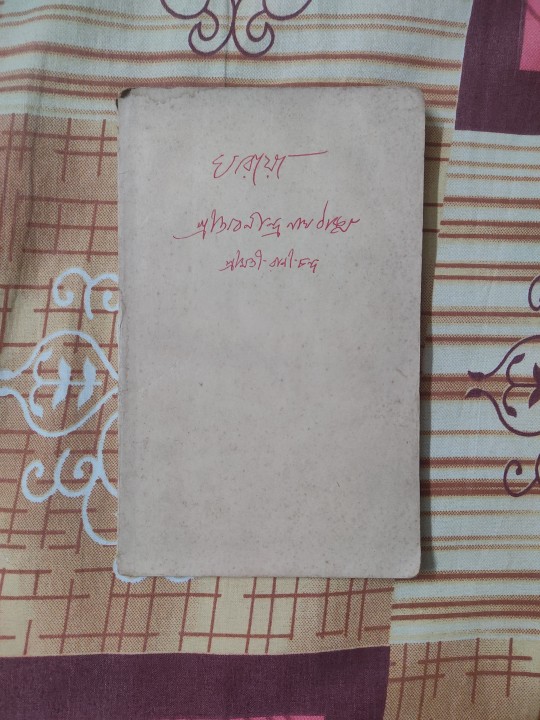
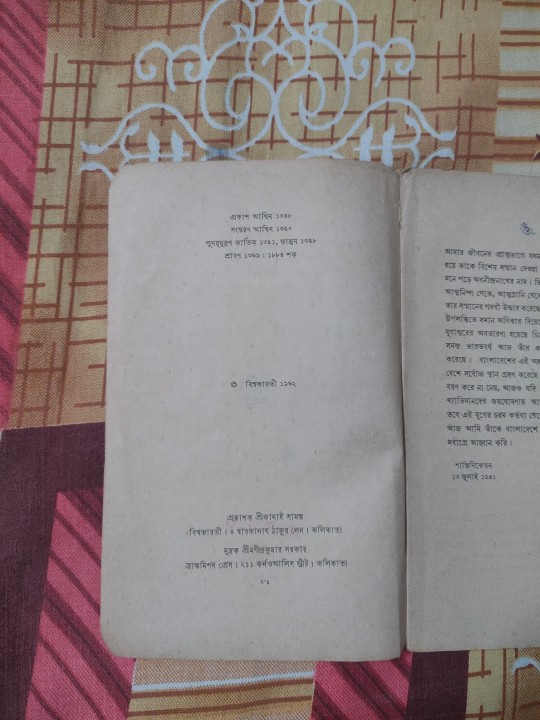
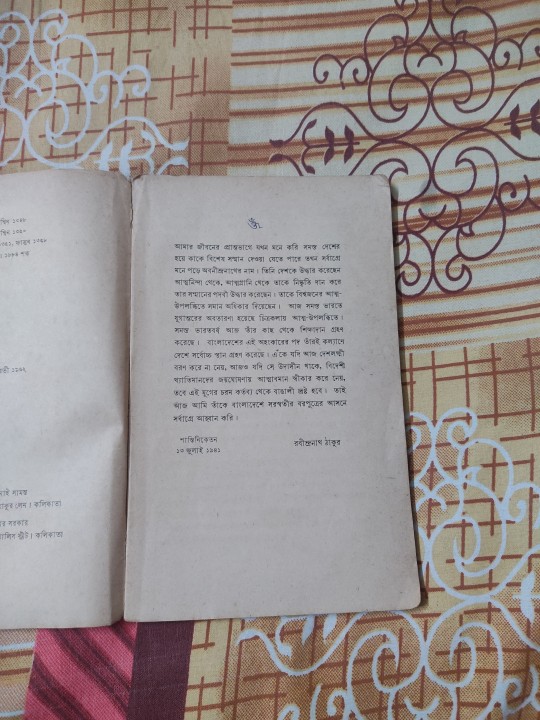
When perusing the works penned by luminaries like Rani Chanda, envy stirs within me, for she was graced with the fortune of intimately knowing the Renaissance Man of Bengal, Rabindranath, and the venerable Abanindranath. Nightly, I immerse myself in the tome that unveils profound simplicity, unravelling what we once deemed intricate as the pinnacle of artistry. As individuals, we often misconstrue the elaborate as a testament to our intellectual prowess, failing to recognize that beneath the veneer lies nought but a fool, oblivious to the profound beauty of simplicity that resonates with the core of our being.
In our journey through life, we neglect the inherent tragedy that surpasses the allure of adventurous escapades to distant mountains. While I appreciate the tranquillity of mountains, there exists a serenity in the silence of self-dialogue, where no ears heed the uttered words. Yet, amidst the quiet companionship of souls who need not speak, a profound connection thrives. Shall we not revel in the profound silence that echoes in the depths of the ocean, where even amidst the vastness, one converses with their soul, their truest companion?
For in this expansive solitude, where souls commune without the need for spoken words, there lies a trade with the silence of Shangri-La, where companionship pales in comparison to the profound exchange with one's own soul, a rare and invaluable union.
0 notes
Text

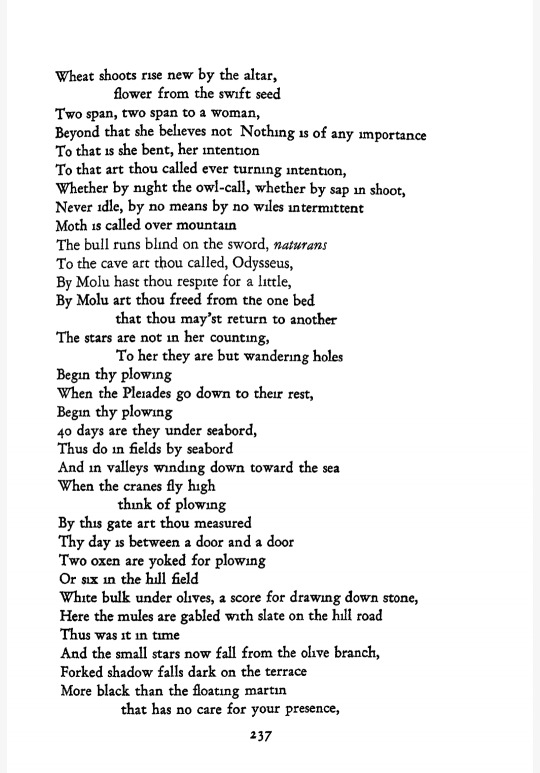


Ezra Pound
0 notes
Text

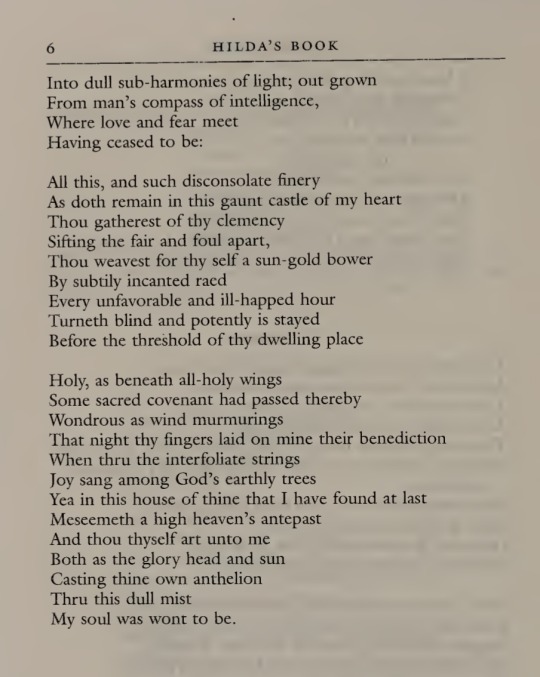
By the time he was twenty years old, Ezra Pound had already been composing poetry for several years, from ambitious imitations of Browning monologues to satires on college life. He told friends that, for practice at his craft, he had begun writing a sonnet every day, “when I brush my teeth,"1 and about fifty of those early sonnets and sonnet fragments are still among his papers, saved by his family. Indeed the bulk of his unpublished, shorter poetry which survives dates from his college and university years (1901- 1907) or shortly thereafter, although there are several unpublished pieces composed throughout his career. Once he began publishing volumes of poetry (A Lume Spento, 1908),he considered nearly all of his compositions worth publication, and had
few “exercises,,in verse outside his volumes in print. He had used his early years as a time of developing his craft, and the dozens of abandoned early experiments are testimonies to his persistence as well as to his editorial judgment. Those early years were also the time of particular apprentice projects: "Hilda's Book,,and the San Trovaso notebook.
These date from the years 1905-1908, and were, with A Lume Spento, Pound's first attempts to select from his earliest poems
and to organize them into coherent volumes. Neither was published in book form during Pound's life, although poems were drawn from each collection to take their places in his early books. “Hilda's Book" was, in a sense, a private publication: hand-bound
in vellum by Pound, the twenty-five poems were given to Hilda Doolittle by Ezra as a token of his affection and in honor of their friendship. Flush with youthful but tenuous passion, the poems in
"Hilda's Book” are unified in theme, a garland given by a suitor to his beloved. The love they speak of is polite, romantic, at times almost mystical, and bespeaks a decorous courtship entirely in keeping with current popular notions of turn-of-the-century, genteel American society. And yet the actual courtship which was the occasion of these verses was not so untroubled as the tone of"Hilda's Book” might suggest.
1 note
·
View note
Text


By the time he was twenty years old, Ezra Pound had already been composing poetry for several years, from ambitious imitations of Browning monologues to satires on college life. He told friends that, for practice at his craft, he had begun writing a sonnet every day, “when I brush my teeth,"1 and about fifty of those early sonnets and sonnet fragments are still among his papers, saved by his family. Indeed the bulk of his unpublished, shorter poetry which survives dates from his college and university years (1901- 1907) or shortly thereafter, although there are several unpublished pieces composed throughout his career. Once he began publishing volumes of poetry (A Lume Spento, 1908),he considered nearly all of his compositions worth publication, and had
few “exercises,,in verse outside his volumes in print. He had used his early years as a time of developing his craft, and the dozens of abandoned early experiments are testimonies to his persistence as well as to his editorial judgment. Those early years were also the time of particular apprentice projects: "Hilda's Book,,and the San Trovaso notebook.
These date from the years 1905-1908, and were, with A Lume Spento, Pound's first attempts to select from his earliest poems
and to organize them into coherent volumes. Neither was published in book form during Pound's life, although poems were drawn from each collection to take their places in his early books. “Hilda's Book" was, in a sense, a private publication: hand-bound
in vellum by Pound, the twenty-five poems were given to Hilda Doolittle by Ezra as a token of his affection and in honor of their friendship. Flush with youthful but tenuous passion, the poems in
"Hilda's Book” are unified in theme, a garland given by a suitor to his beloved. The love they speak of is polite, romantic, at times almost mystical, and bespeaks a decorous courtship entirely in keeping with current popular notions of turn-of-the-century, genteel American society. And yet the actual courtship which was the occasion of these verses was not so untroubled as the tone of"Hilda's Book” might suggest.
0 notes
Text
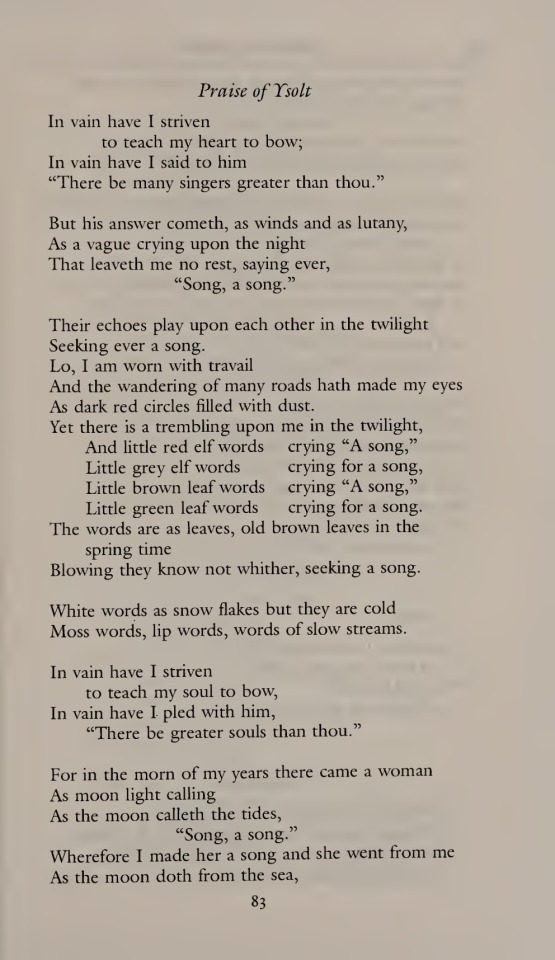
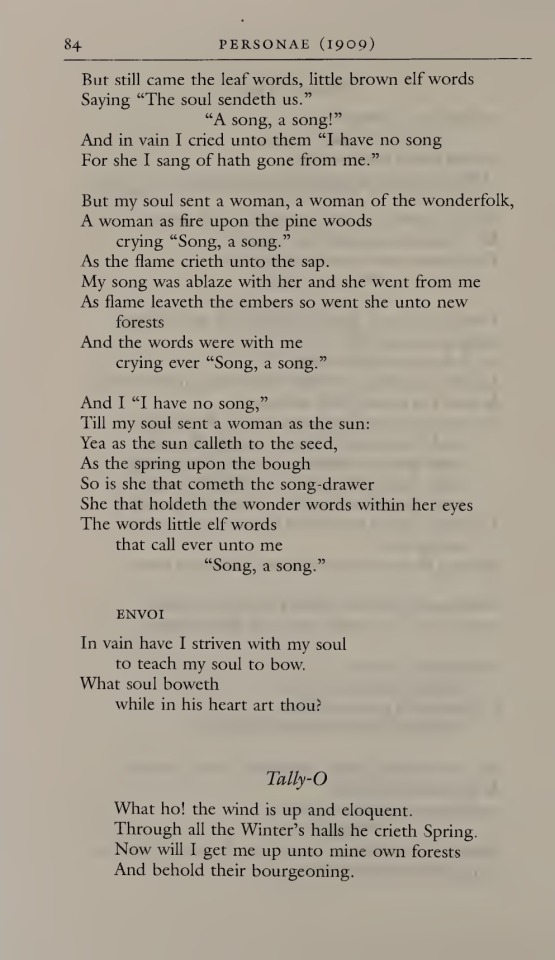
2 notes
·
View notes
Text


By the time he was twenty years old, Ezra Pound had already been composing poetry for several years, from ambitious imitations of Browning monologues to satires on college life. He told friends that, for practice at his craft, he had begun writing a sonnet every day, “when I brush my teeth,"1 and about fifty of those early sonnets and sonnet fragments are still among his papers, saved by his family. Indeed the bulk of his unpublished, shorter poetry which survives dates from his college and university years (1901- 1907) or shortly thereafter, although there are several unpublished pieces composed throughout his career. Once he began publishing volumes of poetry (A Lume Spento, 1908),he considered nearly all of his compositions worth publication, and had
few “exercises,,in verse outside his volumes in print. He had used his early years as a time of developing his craft, and the dozens of abandoned early experiments are testimonies to his persistence as well as to his editorial judgment. Those early years were also the time of particular apprentice projects: "Hilda's Book,,and the San Trovaso notebook.
These date from the years 1905-1908, and were, with A Lume Spento, Pound's first attempts to select from his earliest poems
and to organize them into coherent volumes. Neither was published in book form during Pound's life, although poems were drawn from each collection to take their places in his early books. “Hilda's Book" was, in a sense, a private publication: hand-bound
in vellum by Pound, the twenty-five poems were given to Hilda Doolittle by Ezra as a token of his affection and in honor of their friendship. Flush with youthful but tenuous passion, the poems in
"Hilda's Book” are unified in theme, a garland given by a suitor to his beloved. The love they speak of is polite, romantic, at times almost mystical, and bespeaks a decorous courtship entirely in keeping with current popular notions of turn-of-the-century, genteel American society. And yet the actual courtship which was the occasion of these verses was not so untroubled as the tone of"Hilda's Book” might suggest.
3 notes
·
View notes
Text


Ezra Pound
1 note
·
View note
Text


Ezra Pound
1 note
·
View note
Text


Naiyer Masud was born in 1936 in Lucknow. He did two separate PhD degrees in Urdu and Persian, and was a professor of Persian at Lucknow University. He started publishing his fictional work in the 1970s, of which four collections have appeared so far. Two collections of selected stories have appeared in English translation as Essence of Camphor and Snake Catcher, the former later also translated into Finnish, French, and Spanish. Today he is considered South Asia’s foremost Urdu short-story writer and was the recipient, in 2008, of India’s highest literary award, the 17th Saraswati Samman.
0 notes
Text
Robert Musil
Nachlaß zu Lebzeiten (1936). Posthumous Papers of a Living Author, trans. Peter Wortsman (Eridanos Press, 1988)
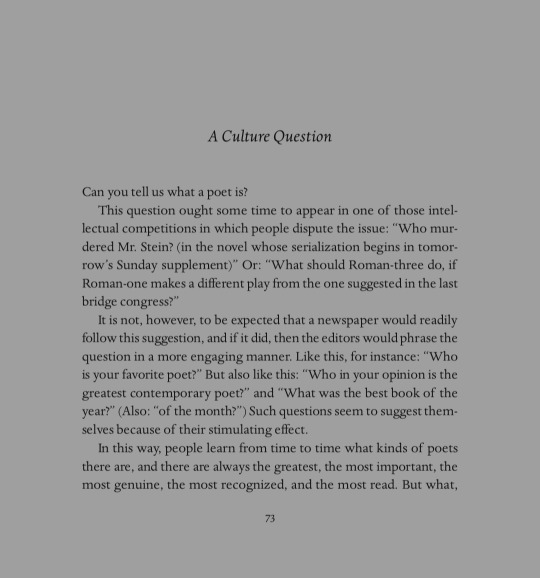


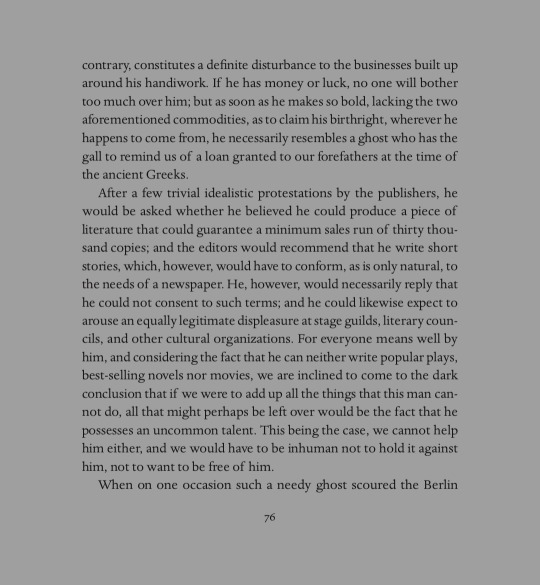

0 notes
